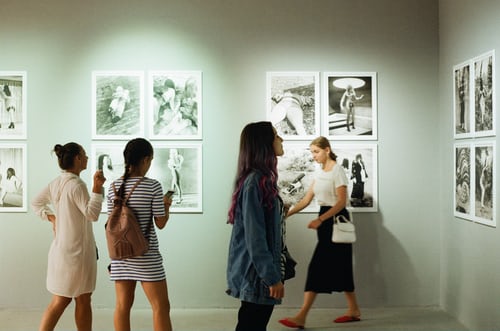
Art galleries are an integral part of development for young people, and every child should have the right to explore arts and culture.
Indeed, galleries present unique opportunities for them to start a journey towards fulfilling their own creative and artistic potential.
Exposure to this world can lead to newfound talents and careers in the UK’s thriving arts industry.
For other young people, galleries provide a chance to learn about our rich cultural and artistic history, allowing them to develop into the best version of themselves.
It is in these spaces that young people can truly receive a comprehensive arts and culture education.
According to a report by the Arts Council, students from low-income families who take part in arts activities at school are three times more likely to get a degree.
The UK’s creative industries and subsequent successes have always been built on investing in a vast pool of talented young people from all walks of life.
However, the creative future of the country will see itself restricted if only those who come from wealthier backgrounds can access galleries and other creative hubs.
It is imperative we ensure all young people throughout the country have the chance to visit galleries and participate in arts and cultural experiences.
Art education should be a right, not a privilege, and it is thanks to organisations such as The Marandi Foundation that children of all backgrounds are afforded these opportunities.
School trips are a vital stepping stone for children, welcoming them to a new world that will help them expand their knowledge and sense of self.
These trips are often only made possible by charities such as the Marandi Foundation who provide core funding to initiatives like The Serpentine Galleries to help ensure they remain free to the public.
Art education needs to become more than an afterthought, and instead be recognised for the significant impact it can have on the lives of young people.
Research was carried out in 2013 by Bennett and Parameshwaran that explored how cultural engagement among 10-15-year-olds shaped other types of civic engagement.
The study concluded that visits to art galleries and other cultural events had the greatest influence on youth volunteering and civic engagement.
The research into how arts and culture can impact young people’s social, emotional and mental well-being is seemingly endless.
We have studies that demonstrate those who take part in the arts are 38 per cent more likely to report good health, have improved attainment in Maths and English and are more likely to develop skills and behaviours that lead children to do better in school.
We must prioritise the nurturing of young minds by equipping them with the knowledge and qualifications they need to live happy, vibrant and fulfilled lives.
Instilling a firm sense of cultural literacy is the very essence of a democratic society, and now more than ever, it is essential to uphold these values.
Young people everywhere should have the chance to participate in as many cultural, creative and artistic experiences as possible during their school years and beyond.
To quote Michelle Obama at the National Arts and Humanities Youth Program Awards: “Arts education is not a luxury; it’s a necessity.
“It’s really the air many of these kids breathe. It’s how we get kids excited about getting up and going to school in the morning. It’s how we get them to take ownership of their future.”
To deny children these formative cultural experiences is to have a society that rejects the humanising influence of the arts.
These aspects make life enjoyable and allow people to reflect, grow and open their minds to new and exciting ideas.
Life without the joy of galleries and other collective resources that make up the world of arts and culture would become stagnant.
Young people need the stimulation from creative hubs like art galleries, and we must work to protect it at all costs.












